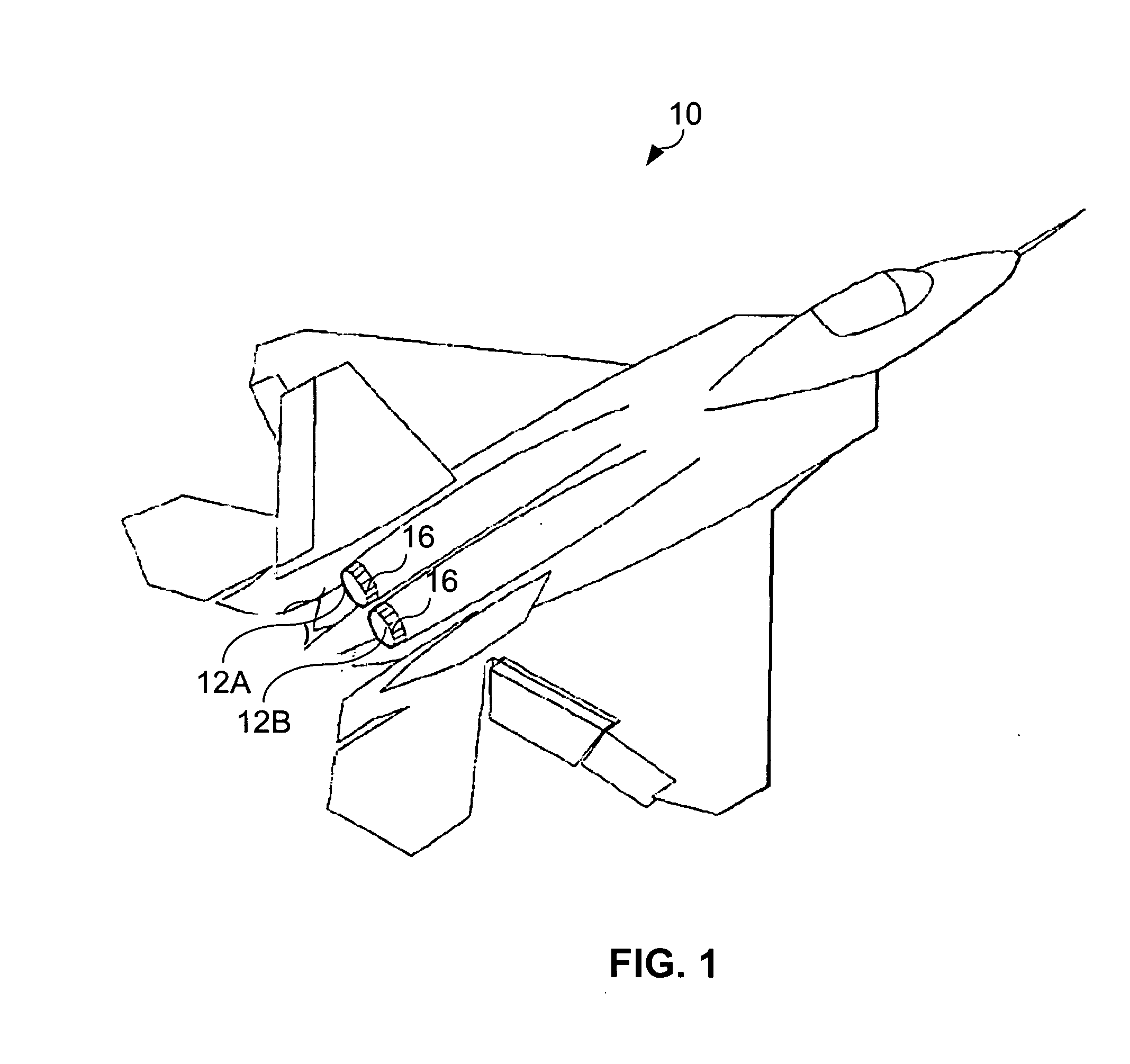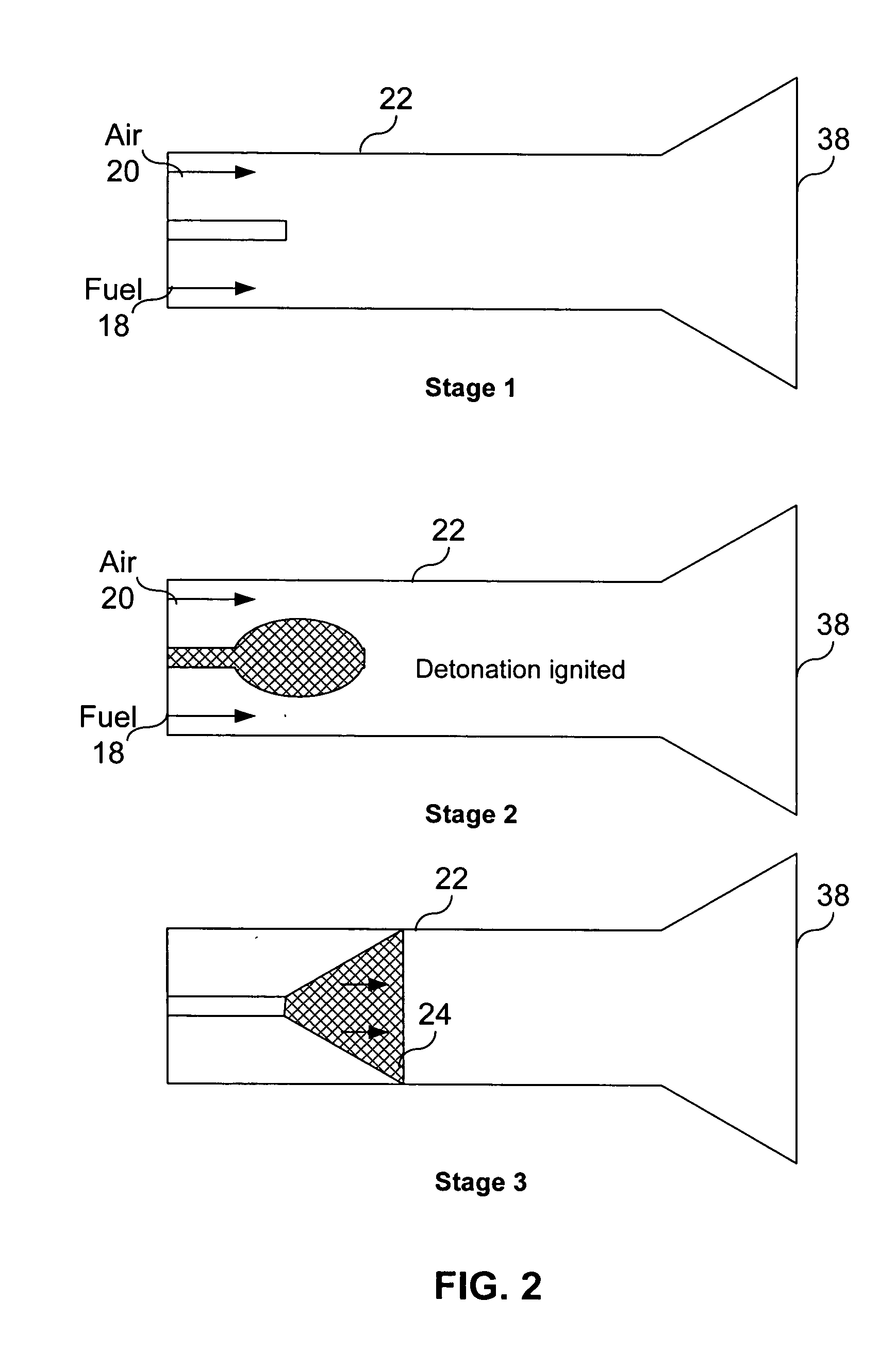Mixing-enhancement inserts for pulse detonation chambers
a technology of mixing enhancement and pulse detonation chamber, which is applied in the direction of intermittent jet plants, vessel construction, marine propulsion, etc., can solve the problems of inability to direct detonation initiation at the thrust wall, inconvenient engine design, and complicated pde of onboard oxidizers, so as to reduce the number of moving parts, reduce or eliminate the inefficient use of bleed air, and simple mechanical design
- Summary
- Abstract
- Description
- Claims
- Application Information
AI Technical Summary
Benefits of technology
Problems solved by technology
Method used
Image
Examples
Embodiment Construction
[0030] Preferred embodiments of the present invention are illustrated in the FIGUREs, like numerals being used to refer to like and corresponding parts of the various drawings.
[0031] Pulse detonation is a propulsion technology that detonates fuel to produce thrust more efficiently than existing solutions. Pulse detonation engines produce a higher specific thrust and may be used as a part of a multi-stage propulsion system. Additionally, the pulse detonation engine may provide static thrust for ram-jet or scram-jet engines or operate in combination with turbo-fan systems. As such, many potential applications exist for pulse detonation engines.
[0032] Pulse detonation engines are an extension of pulse-jet engines that share many similarities. However, an important difference exists. Pulse detonation engines detonate rather than deflagrate their fuel. The detonation of fuel results in immense pressure which in turn may be used as thrust. Deflagration is a relatively gentle process of ...
PUM
 Login to View More
Login to View More Abstract
Description
Claims
Application Information
 Login to View More
Login to View More - R&D
- Intellectual Property
- Life Sciences
- Materials
- Tech Scout
- Unparalleled Data Quality
- Higher Quality Content
- 60% Fewer Hallucinations
Browse by: Latest US Patents, China's latest patents, Technical Efficacy Thesaurus, Application Domain, Technology Topic, Popular Technical Reports.
© 2025 PatSnap. All rights reserved.Legal|Privacy policy|Modern Slavery Act Transparency Statement|Sitemap|About US| Contact US: help@patsnap.com



